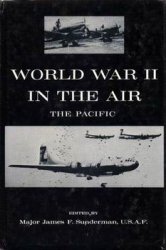Events of 1993 had transformed the image of Russia in Poland. President Yeltsin, having condoned Poland’s NATO’s candidacy in August, changed his mind in September. In October, his troops stormed the Russian parliament. This caught the attention of Poland’s postcommunist socialists, who had just won a democratic election and were about to form a parliamentary majority. In December, Vladimir Zhirinovskii’s nationalist Liberal Democratic party won more votes in the Russian parliamentary elections than any other. Zhirinovskii was known for his anti-Polish rhetoric (“whore of NATO,” which had a heady career, may have been his coinage). This caught the attention of Polish society as a whole. In January 1994, 70 percent of Poles surveyed believed that Russia posed a military threat to Poland, the highest number since 1989, and significantly higher (for the first time) than the comparable figure for Ukraine.4
Yeltsin’s Russia, which had never developed a policy toward Poland, treated Poland within the rhetorical categories of the NATO propaganda war. Until it became clear that NATO would enlarge despite Russian opposition, Moscow essentially ignored Warsaw. This attitude changed only after the U. S. Senate gave its advice and consent to NATO enlargement on 30 April 1998. At that point, Russian-Polish relations returned to life. Foreign Minister Bronislaw Geremek (1932- ) and President Aleksander Kwasniewski were both greeted with considerable decorum in Moscow in 1998.5 A Russian foreign minister visited Warsaw for the first time in 2000. Yeltsin’s successor, Vladimir Putin, travelled to Poland in 2002. Opposition to NATO enlargement had been a
Matter of elite rather than public opinion in Russia, so such a volte-face was easy for Russian authorities. NATO enlargement did not even change the basically favorable attitude of the Russian populace to the United States.6 There was no great hostility toward Poland or its membership in NATO among Russian voters. In the late 1990s, Russians ranked Poland as the most stable state in Eastern Europe, and a stunning 56 percent believed that Poland should be invited to mediate in ethnic conflicts within the Russian Federation.7 Poland’s eastern policy and domestic successes had changed the perceptions of the Russian people.
Like official Moscow, official Minsk resisted Polish overtures after 1994. Stanislau Shushkevich, the compromising Belarusian patriot, was pushed from power. Even during his period as speaker of parliament, most policy was set by the communist Prime Minister Kiebich, the country’s leading newspaper was called “Soviet Belorussia,” and the local KGB not only still acted like the KGB, it was still called the KGB.8 Both Shushkevich and Kiebich, along with the national activist Zyanon Pazniak, were crushed in Belarus’s July 1994 presidential elections by a young and inexperienced anticorruption activist, Aleksandr Lukashenka. This was the work of democracy: Lukashenka was not the candidate of the communist establishment, and his decisive defeat of Kiebich, Shushkevich, and Paznyak demonstrated that Belarusians wanted someone new.
President Lukashenka destroyed the democratic institutions and the national symbols of the young Belarusian state. In April 1995, he expelled nationalist deputies from the parliament, encouraged the others to ratify a treaty with Russia, and invited Russia to protect Belarus’s border with Poland. In May 1995 he won a national referendum, making Russian an official language of the Belarusian state and removing Belarusian national symbols from state insignia. His bodyguard removed the Belarusian colors from the presidential compound, tore the flag into pieces, and gave them away as souvenirs. In November 1996 Lukashenka won another referendum, thereby extending his own rule and disempowering the legislature and judiciary. This plebiscite was carried out in farcical conditions, and provoked a joint appeal from Poland, Lithuania, and Ukraine. Nevertheless, its results reflected the preferences of most Belarusians for a neo-Soviet order. Lukashenka’s domestic policy of Russification did not make him a Russian, but it did create immense problems for aspiring Belarusian patriots. When he was elected, 80 percent of first-graders studied in Belarusian; three years later, the figure had fallen to 7 percent.9 By the end of the decade, there was only one Belarusian school in Minsk, the Belarusian capital.
This was a president who whitewashed Stalinist terror, banned the use of
Schoolbooks printed after the Soviet period, tore up contracts between Belarusian firms and Western investors, and “spit on the International Monetary Fund.” As he said himself, “I will not be leading my people to the civilized world,” since “Belarusian values have nothing in common with Western values.” He called Belarusian patriots “fascists,” the sort of people “who will break into your homes and rape your wives and daughters.” He imprisoned his opponents, and then began to make them disappear.10 He appealed to religious themes as an “Orthodox atheist,” and opposed foreign “Western influences” such as Roman Catholicism, the religion of two million Belarusians or a fifth of the population. Lukashenka portrayed Poland as both a traditional Catholic threat, and as the vanguard of NATO. He claimed that Solidarity and the CIA were planning a coup in Minsk. He promised not to let western Belarus, where the Polish minority was concentrated, become a second Yugoslavia, and claimed that Polish aggression necessitated a Slavic union with Russia.11 Luka-shenka’s foreign policy was pro-Russian, in the sense that he wished to gain as much as possible from the idea of a union with Russia.
Polish policy engaged the society more than the state. The beleaguered Belarusian national movement, anti-Polish at the beginning of the 1990s, was proPolish by the end of the decade. The Polish example taught oppositionists to think in terms of the rescue of a nation-state, rather than a revival of historic entities. After Solidarity’s return to government in 1997, Warsaw engaged the Belarusian opposition, while trying to avoid the isolation of official Belarus from Europe. This was a return to the two-track policy of 1989 - 91, this time on the scale of Belarus rather than the entire Soviet Union. It included the quiet third track of informal contacts, which included aging Solidarity activists and dozens of new Polish nongovernmental organizations. While Belarusian activists had regarded this approach with suspicion the first time around, by the late 1990s such initiatives were welcome.12 Whether they made any difference in the consolidation of Belarusian nationality is another question.




 World History
World History









